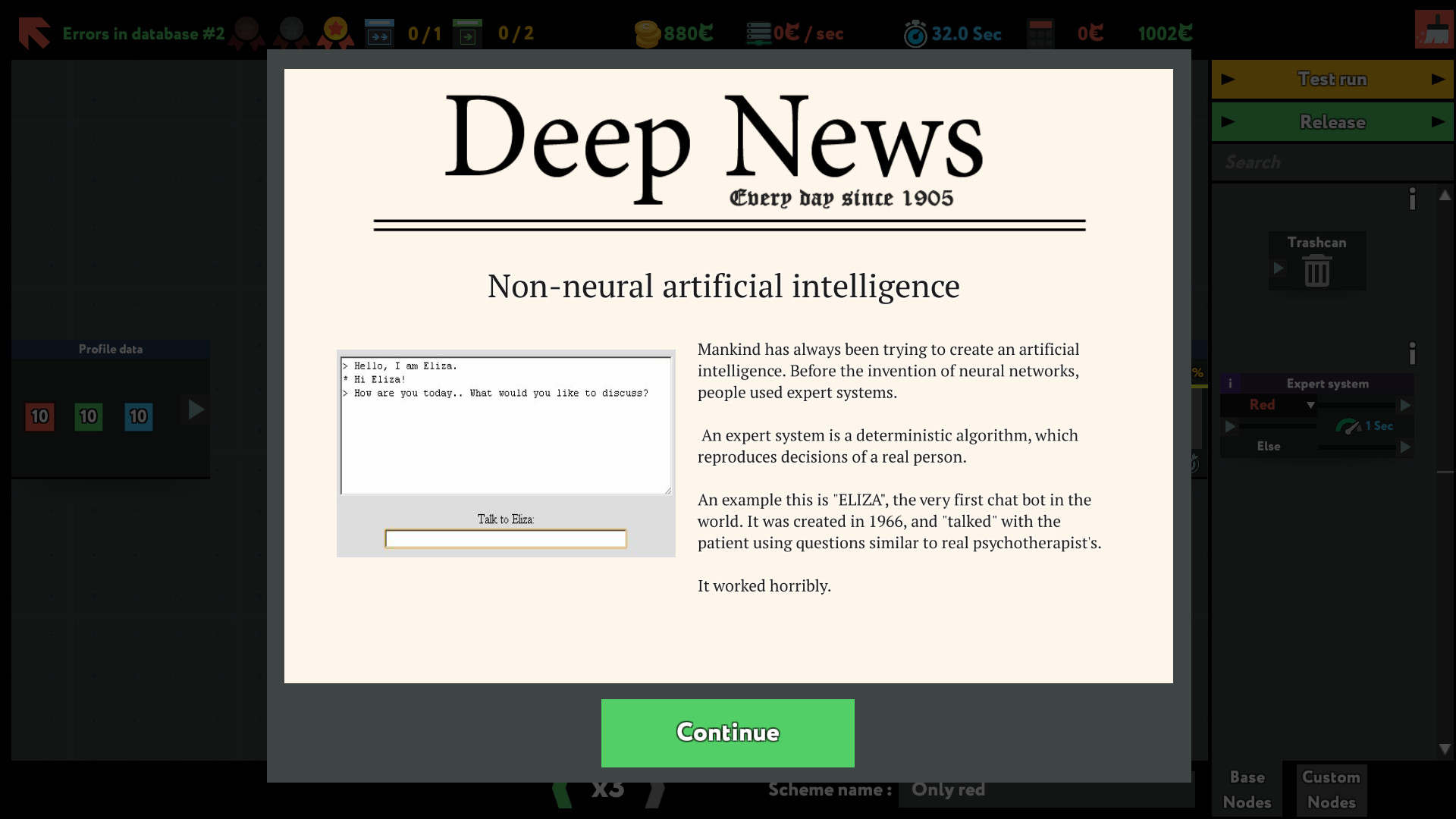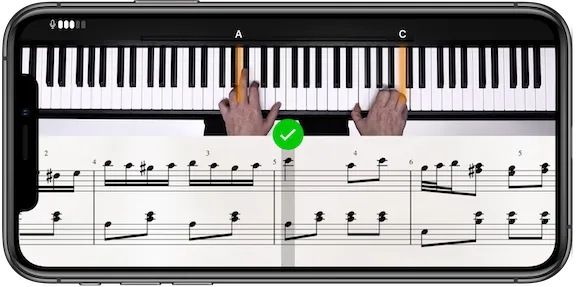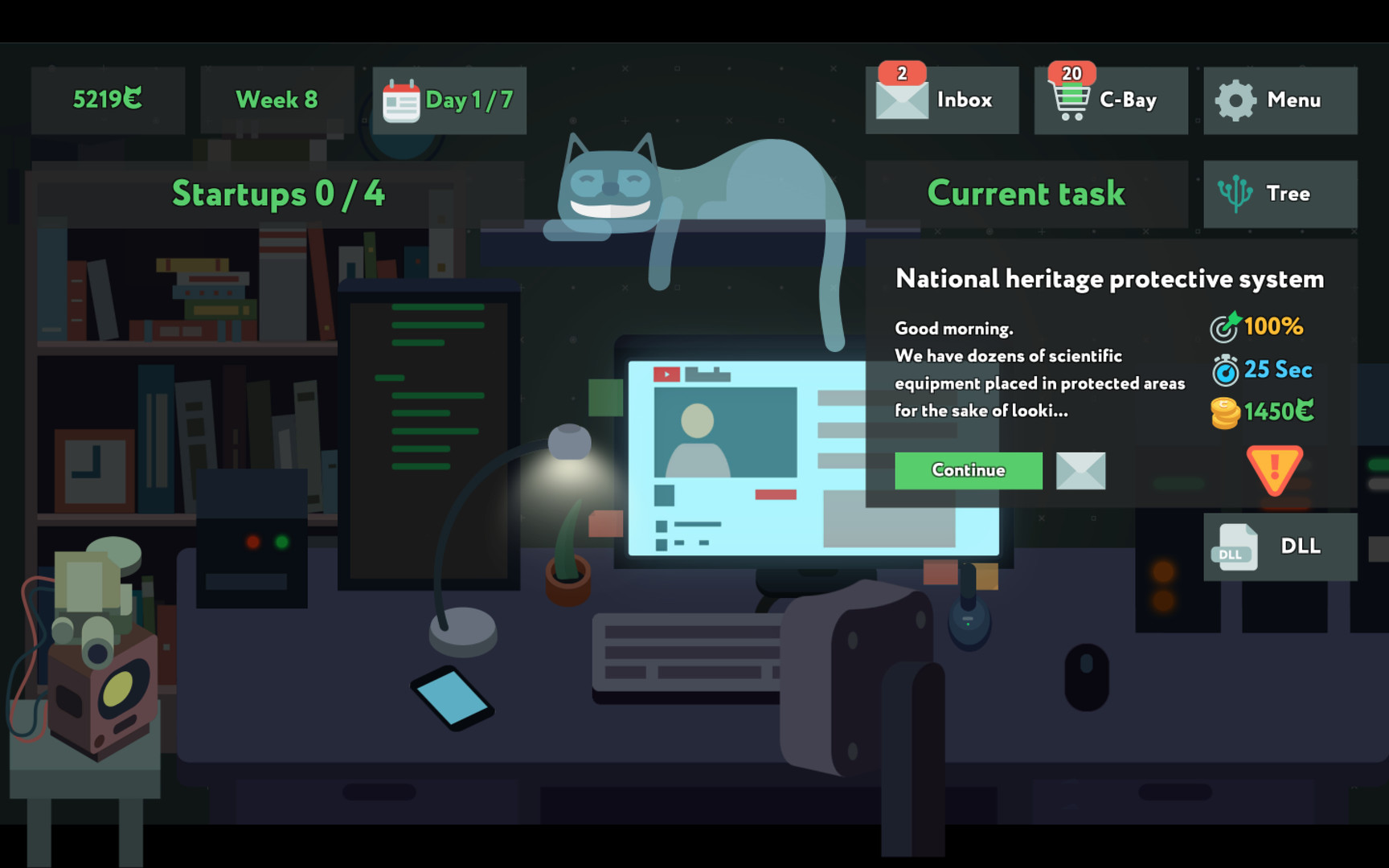Learn it at a very slow tempo, and then speed up over time. It should never go extremely fast, and should be played with a certain amount of attention to the dynamic contrasts. The videos provided here should help you learn the piece, section-by-section, getting the the notes, rhythms, fingerings, and pedaling. The latest tweets from @whiletruegame. Forget pulling all-nighters: There's a more restive way to cram for tests. New research by neuroscientists at Northwestern University in Chicago shows people can actually learn while they're asleep.
- While True Learn Help
- While True Learn Solutions
- While True Learn Free Download
- While True Learn Soundtrack
by Christy Thomas
Sherlock Holmes’ famous words to Dr. Watson can be rephrased to reference the ear rather than the eye as the sensory organ of observation: You hear, but you do not listen. In these parallel statements, the implication is that “seeing” and “hearing” are passive, while “observing” and “listening” are active, requiring a heightened level of engagement from the observer or listener but also resulting in a greater acquisition of knowledge.
Music surrounds us everyday—it is on our playlists, the radio, commercials, soundtracks for movies or television shows, our neighbors’ stereo—yet we seem to have mastered the art of hearing without listening. Nevertheless, music has the power to enrich student engagement in the college classroom if they learn the art of active listening and how to connect what they hear with a broader conceptual network. To practice active listening, we must—like Dr. Watson—learn to observe with our ears.
While the importance of teaching with a variety of artifacts or objects is generally recognized, music may not always be the first port of call outside of music classes. But music is not just for musicians and music courses. By expanding the notion of a “text” to include any object that can communicate meaning—as in the literary theory sense of the word—then music can also be treated as an important object of study from a variety of vantage points.[2]
Musical examples can be usefully deployed in a wide variety of disciplines. For example, an American History course on the 1960s could feature iconic protest songs of the anti-war movement or a comparison of Aretha Franklin’s Respect from 1967 with Otis Redding’s original 1965 recording in order to highlight prevalent issues of class and gender in the United States at that time. An English course might examine how particular texts have been set to music, or how canonical theatrical works have been adapted for the operatic stage. A class on Shakespeare’s Othello, for example, might feature a musical excerpt from Giuseppe Verdi’s 1887 operatic setting of the play. An Art History course on Impressionism might examine various musical compositions in conjunction with visual works of art of the same period, comparing Debussy’s Reflets dans l’eau with Claude Monet’s Water Lilies to better understand the principles and markers of the impressionist movement as expressed in various media.
Many university libraries are purchasing subscriptions to online streaming databases and supporting initiatives to catalogue and archive their multimedia collections, thus providing access to a rapidly diversifying treasure-trove of newly available resources for use in undergraduate courses. In order to make effective use of the music made available via these resources, we must train our students how to engage with it. Even the best-prepared activities can miss the mark, however, unless students are prepared to listen and not just to hear. However, while active learning is a frequent topic of discussion in pedagogical circles today, the notion of active listening is rarely addressed—if at all.[3]
While True Learn Help
So what is “active listening” and how can we encourage and facilitate it when using musical examples in undergraduate courses?
If active learning is generally understood as any pedagogical approach that engages students in the learning process and requires students to do meaningful learning activities and think about what they are doing in the context of the classroom, then active listening similarly requires students to engage with and think about what they hear.[4] In other words, active listening is listening with a purpose.
Whether employed in music courses or in non-music courses, active listening does not require advanced musical training or the ability to read music, yet it can still be used with students who can read music. Even students with years of performance training may struggle when it comes to talking about music or making salient observations about what they hear. Students may be familiar with a piece, and may even know it well, but have they thought about it? Active listening, therefore, is a useful tool in both music courses and non-music courses, and can have the democratizing effect of leveling the playing field.
In order to address how active listening can be cultivated through teaching with music, I outline three types of listening that might be mapped onto different listening goals, followed by four practical techniques that can be used during any of these three types of listening.
Three Types of Listening:
In teaching music history, music theory, and music appreciation courses, I often think of three types or tiers of listening: 1) affective listening, 2) structural listening, and 3) dialogic listening.[5] Although these categories have been particularly effective in teaching musical examples with a level of detail appropriate for music majors, they can also be usefully applied for using musical examples in non-music courses more broadly.
Affective Listening
This type of listening is perhaps the most basic. It paints a picture for the ear in broad strokes, and gives students a general sense for the affect of a piece—its emotion, its color, its stylistic or generic characteristics, its je ne sais quoi. It could also be thought of as a “sampler strategy,” a method for moving quickly through a piece or through a number of pieces in order to set the stage for more focused listening. This type of listening can be enhanced by adding a layer of commentary while the music plays to direct students’ attention to particular details before asking them to make observations on their own, as will be discussed later. Useful questions for this type of listening typically prompt students to voice their observations on a basic level: What instruments do you hear? What genre of music is this? What emotions does this evoke? How fast or slow is it? (For those with musical training, this might also include more targeted questions to draw out observations about tempo, meter, rhythm, range, etc.)
Structural Listening
This type of listening approaches a musical example almost like a sculpture or a painting, in which you point students toward particular moments and see the ways in which those moments are the culmination of particular trajectories. As such, structural listening often means comparing different moments from within a particular piece. Questions might include: How does the artist or composer move from one idea to another? Why? What underlying questions does the piece pose and how does it answer these questions, if at all? How does the text relate to the sounds?
Dialogic Listening
This type of listening is perhaps the most complex and time-consuming, yet also the most fruitful and potentially rewarding. As the name implies, this type of listening places a musical example in dialogue with external elements—generic conventions, other musical pieces, artwork, texts, objects, etc. Teaching with music does not preclude using texts or visuals as well. If your piece has lyrics, include them (and if those lyrics are not in your students’ native language, provide a translation as well). It often helps to complement listening with other ways of engaging with musical examples by using other types of media. Questions that promote dialogic listening might, for example, entail comparing a piece of music to another piece by the same artist or composer, to a later reworking or different recording of that piece, to a painting or sculpture engaging with similar concepts or coming from a similar period, or to a newspaper article or review from the same era; it could even involve tracing the piece’s reception over time.
Four Practical Techniques:
Teaching with music can be challenging—especially because we as a society have developed the habit of hearing without listening. In playing a musical example in class, the risk is often one of losing control of student attention. Too often, the moment the music starts playing, eyes begin to glaze. These techniques are designed to help students engage productively with what they hear, to engender active rather than passive listening.
Model good listening
Your students look to you as the model for how to listen well. Body language is important. If you use this time to shuffle through notes, you appear disengaged. If you look like you’re just waiting for the example to be done before you can start speaking again, you appear disengaged. Try closing your eyes. Smile. Frown. Laugh. Be expressive. Show that the music affects you.

Repeat, repeat, repeat
Sometimes it takes multiple hearings to grasp a musical selection. When reading written texts or analyzing visual objects, students can move back and forth between different elements and can look back and refresh their memory on a point or a detail that has already been covered. But you can’t “listen back” in the same way as you can look back. When listening to music, you can only hear one moment at a time, moving sequentially from moment to moment without the ability to jump backward and forward. Playing examples multiple times allows students to better absorb the music and to make more informed assessments and observations of what they have heard.

Highlight salient points
Talk over the musical example to point out important features that you want your students to notice. This can be especially helpful when your students are less confident about their own ability to listen effectively, and to demonstrate your expectations in terms of what to listen for. The last thing you want is for students to tune out and lose focus during a musical example. The point is to engage students, not to use this time for other unrelated activities (Facebook, email, Twitter, homework for other classes, etc.). Providing an on-going commentary essentially provides students with a road-map for listening, helping them not only to understand the relevance of what they hear in a given moment but how that moment relates to other moments in the piece.
Give listening directives
Students should always know what to listen for. Because everyday musical engagement often does not involve critical thinking, it is helpful to point students in the right direction. Ask a question before playing the musical example. Tell them a particular aspect of the piece to focus on. Clarify your expectations for what you would like your students to do, listen for, or understand as a result of listening to a particular musical example.
Active Listening: Beyond Music
The principles behind active listening can be extended and applied to more than just using music or multimedia in the classroom. The practice of active listening cultivates transferrable skills for how to listen carefully and critically in other situations both inside and outside the classroom—listening to lectures, to political speeches, to TED talks, and even to one another. For example, in her recent op-ed for The New York Times, “Lecture Me. Really.”, Molly Worthen argues about the validity of the lecture course in the midst of today’s debates about active learning.[6] All too often, such pedagogical debates condense lecturing and active learning into an oppositional binary, with the implication that lecturing only results in passive learning, if it engenders learning at all. Yet I would argue that the underlying principles of active listening—critical engagement with aurally received information—challenge the foundational assumptions for such a binary. Although Worthen does not specifically use the phrase “active listening,” her argument is essentially built upon the notion that lectures require—or should require—students to listen rather than just hear. As Worthen points out, in 1869 former president of Harvard University Charles Eliot cautioned that “the lecturer pumps laboriously into sieves. The water may be wholesome, but it runs through. A mind must work to grow.”[7] However, for Worthen—as well as for myself—an alternative to abolishing the lecture is to teach students how to listen, to hone the sieve instead of turning off the water. Thus, whether applied to teaching with music or to other situations, active listening is a useful pedagogical strategy for teaching the principles of critical inquiry.
Do not be satisfied with simply hearing and seeing. Strive instead to listen and observe.

————————————————————————
Yale Library Resources
Yale’s links to audio streaming databases: http://web.library.yale.edu/music/audio-databases
Yale’s links to video streaming databases: http://web.library.yale.edu/music/video-databases
Yale Music Library: http://web.library.yale.edu/music
CDs and other recorded formats are searchable through Orbis
[1] Sir Arthur Conan Doyle, “A Scandal in Bohemia,” in The Adventures of Sherlock Holmes. (London: George Newnes, Ltd., 1892).
[2] For more on using multimedia in classrooms, see, for example: Janice Marcuccilli Strop and Jennifer Carlson, Multimedia Text Sets: Changing the Shape of Engagement and Learning. Winnipeg: Portage & Main Press, 2010.
[3] Although there is a considerable amount of literature on the use of music in elementary education classrooms (often in the vein of using music as a memory tool or a means of drawing students together, or even “how playing classical music in the background helps children focus”), as well as a number of pedagogical resources for teaching music history and music theory (perhaps most notably the Journal of Music History Pedagogy and the Journal of Music Theory Pedagogy), there are fewer resources on effective practices for employing musical examples when teaching broader concepts in undergraduate classrooms more generally.
[4] For more on active learning, see, for example: Michael Prince, “Does Active Learning Work? A Review of the Research” Journal of Engineering Education, Vol. 93 No. 3, 2004: 223-231.
[5] I am indebted to James Hepokoski for these particular terms and ways of thinking about different types of listening.
[6] Molly Worthen. “Lecture Me. Really.” The New York Times, 17 October 2015. http://www.nytimes.com/2015/10/18/opinion/sunday/lecture-me-really.html?_r=0
[7] Charles William Eliot, Addresses at the Inauguration of Charles William Eliot as President of Harvard College, October 19, 1869. Server & Francis, 1869: 42.
23 August 2020, 22:08
While True Learn Solutions
Think you can read music? We've put together the world's most fiendish quiz to put your skills to the test. So, blow the cobwebs off that Grade 5 theory, dredge up those forgotten music lessons and pit yourself against our quizmaster…
While True Learn Free Download
How well can you read music? We've put together our most fiendish quiz yet to put your knowledge to the test.
Think you know your F sharp from your G natural? Your augmented fourth from your diminished seventh? Then this is the quiz for you. Let us know how you get on…
While True Learn Soundtrack
You may begin.
